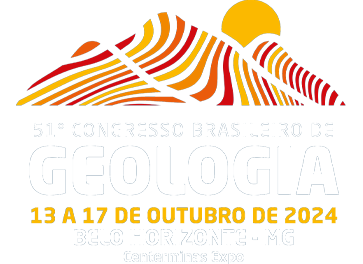Dados da Submissão
Título
AUTOMATED MINERALOGY OF NICKEL AND COBALT ORE FROM SÃO JOÃO DO PIAUÍ LATERITE DEPOSIT
Texto do resumo
The São João do Piauí deposit, part of Piauí Nickel Project by Brazilian Nickel PLC, is a laterite derived from a serpentinized dunite. It’s, briefly, composed of iron oxide-rich silicified saprolite (most significant volumetrically) and iron oxide-rich saprolite, and a magnesium and aluminum rich saprolites, which is accompanied by accumulations of black Mn-oxide at the borders of the magnesium rich saprolite layer, which are enriched in Co, Mn and Ni compared to iron oxide-rich saprolite. Automated mineralogy (Zeiss Mineralogic on a Sigma 300 SEM) was used to check the distribution of Ni and Co through its bearing minerals. This was supported by chemical assay (XRF) and quantitative phase analysis by XRD and the Rietveld method on 10 granulometric size-fractions (<20-500 μm) classified from a representative sample from a blend ore from the company’s stockpile. Serpentine and chlorite are the main ore minerals, accounting for 50-60 wt%, enriched in the coarser and finer particles, while particles between 106-212 μm present the lowest grades, due to higher quartz grades. Spinels are more abundant in coarser, and goethite and hematite in finer particles. Mn-oxide grades are relatively constant except that they are lower >212 and < 20 μm. There’s an overestimation of ∑phyllosilicates under Mineralogic compared to Rietveld, and an underestimation on Fe-oxides and quartz. Having a careful check on phyllosilicate’s chemistry with high Fe content, as particles with multiple and fine-grained mineralogy are common, this could be related to Fe-oxides mixture within phyllosilicates, as products of the continuous weathering of the profile. Similar observation is related to quartz and other minerals: as silicification occurs as pore and vein filling, much of its quantification is compromised because of Mineralogic resolution of scanning grains, the sub quantification of quartz may be indicative that quartz’s SiO2 is incorporated into silicates’ analyses. In general, the sample presents an intermediate composition, which indicates material mostly from magnesium rich saprolite with contribution from iron rich saprolite, due to its low-silica composition. Chlorite, serpentine, smectite and talc are the most important Ni carriers, comprising about 84 wt% of Ni, followed by goethite and Mn-oxides, accounting for 5 and 6 wt%, respectively. Although Mn-phases are less expressive, they account for up to 90 wt% of Co, basically an asbolane-lithiophorite assemblage, with minor hollandite, and Mn-rich chlorite. Because of its fine-grained texture, it’s believed that Co assayed in quartz and goethite is actually Co from fine Mn-oxides inclusions being measured together due to EDS spatial resolution limitations. Low Co-grade spinels might be another Co bearer, but superposition of the diagnostic Co Kα energy with the Kβ one from dominant Fe cannot be reliably deconvoluted by the software. The minerals that carry Ni and Co are not the same; Mn-oxides play the most important role on Co deportment of the ore, and part of Ni’s, while for the magnesium rich saprolite Mg-phyllosilicates host the majority of Ni, with a minor contribution from goethite, which should be considered for ore processing design.
Palavras Chave
nickel laterite; automated mineralogy; quantitative phase analysis by XRD; ore mineralogy; cobalt
Área
TEMA 16 - Geoquantificação e Geotecnologias
Autores/Proponentes
Matheus Lamas Machado, Eduardo Souza Caldeira, Reiner Neumann
